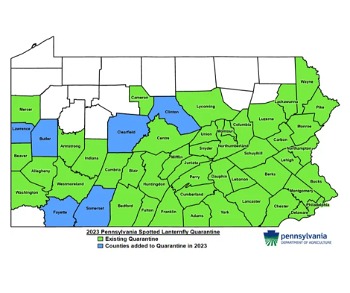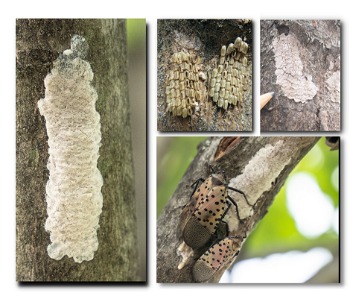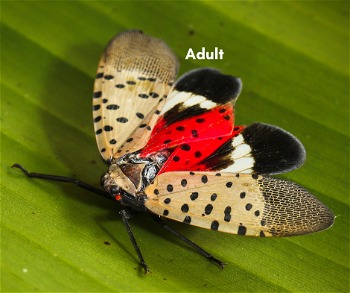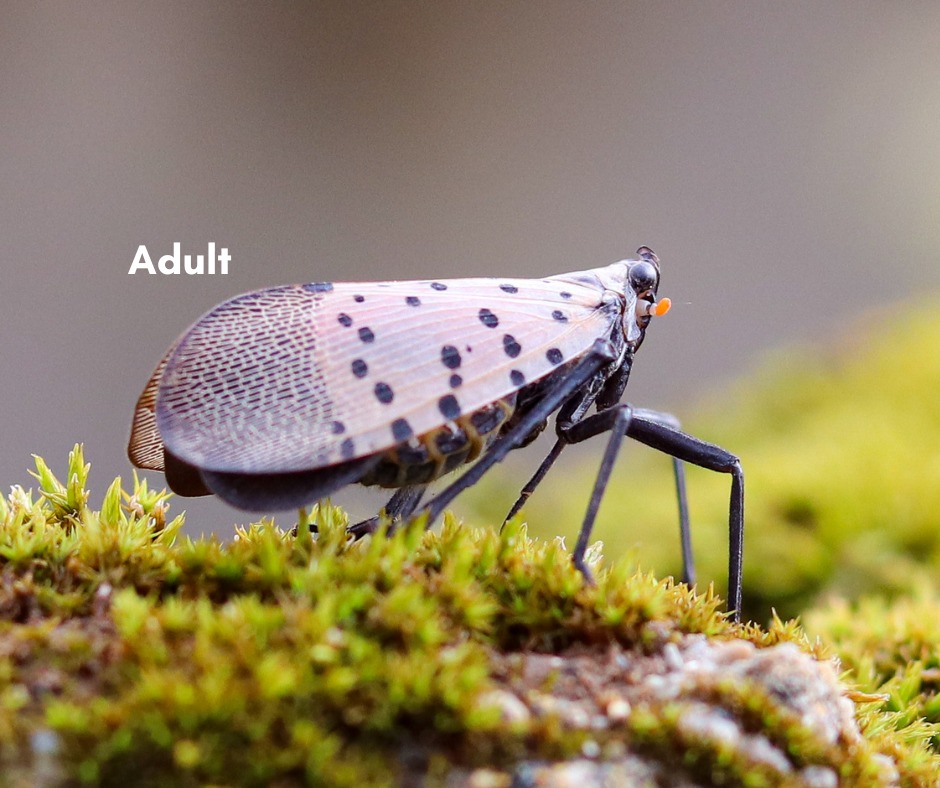Have you heard about the spotted lanternfly?
Residents of Northeastern Pennsylvania are unfortunately becoming quite acquainted with this unpleasant creepy-crawly critter. Read on to learn more about it and why it’s important to take steps to prevent it from spreading further.

Video Highlights:
The spotted lanternfly (SLF) is an invasive species that’s been wreaking havoc in the northeastern United States. It’s a magnificently beautiful insect, but do not let its pretty appearance fool you; it is an environmental menace. Native to Asia, the spotted lanternfly migrated to the United States and was first found in Pennsylvania in 2014. Since then, it has spread throughout the Commonwealth and several neighboring states.
Not having natural predators makes the spotted lanternfly especially problematic. The SLF feeds on the sap of fruit trees, grape vines, and hardwood trees, weakening them and making them more susceptible to disease and other pests. Additionally, the spotted lanternfly excretes a sticky substance called honeydew, which attracts even more harmful insects and encourages the growth of destructive mold and fungi, further weakening the already compromised trees. This significant damage to trees and crops can devastate local agriculture (and the economy).
The PA Department of Agriculture has issued a quarantine for Pike and Wayne counties and other affected counties to prevent the spotted lanternfly’s spread. To date, the SLF has been found in 51 of Pennsylvania’s 67 counties including locally around Lake Wallenpaupack. The quarantine in Pike and Wayne counties and other counties across the Commonwealth is a necessary step in controlling the spread of this pest. Residents of counties under quarantine are asked to take all measures to help prevent the spread of the spotted lanternfly.

So, what can residents of Pike and Wayne counties do to help prevent the spread of the spotted lanternfly?
Inspect your outdoor items.
One of the easiest ways for the spotted lanternfly to spread is through outdoor items such as patio furniture, firewood, grills, toys, and pool items. Be sure to thoroughly inspect everything for any signs of the insect and take steps to remove them.
Remove egg masses.
The Spotted lanternfly lays its eggs on almost any surface, including trees, rocks, and even cars. Freshly laid egg masses will look like gray or gray-brown mud and can appear shiny or waxy. Older ones may look dry or even like columns of seeds. If you see any egg masses, scrape them off and destroy them. You can also use tape to wrap around the egg masses and then throw them away.

Keep your cars, RVs, campers, and boats clean.
The spotted lanternfly can also hitch a ride on your vehicles. Check for egg masses or any other signs of the pest before traveling (or before returning home). Clean your cars, trucks, trailers, boats, campers, and RVs regularly.
Be vigilant.
The spotted lanternfly is a highly invasive species. It can be challenging to control once it has established a foothold in an area. Look for any signs of the pest at all life stages, including egg masses, nymphs, and adults.


Report sightings.
Please report any spotted lanternfly sightings to the PennState cooperative extension office as soon as possible and take steps to remove or kill them.
Yes, Go Ahead! Kill them!
Absolutely, go ahead and kill every spotted lanternfly you see. You can wear gloves and smash ’em, or step on ’em with your shoes. Some people capture them and drop them in a mason jar with some isopropyl rubbing alcohol inside. Be aware, though…they are accomplished jumpers!
By working together to help prevent the spread of this invasive pest, we can help protect the delicate ecosystems within our communities.
For More Information Visit:
USDA – Spotted Lanternfly
Penn State Extension Lanternfly Reporting Page
PA Dept of Agriculture PDF: Spotted Lanternfly Checklist


